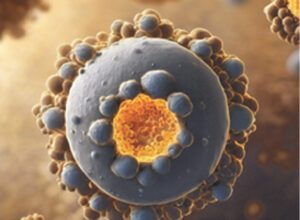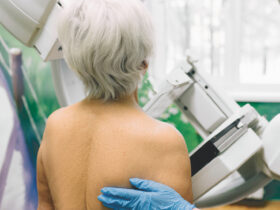Understanding the Dangers and Implications
By Scott Briggs – American Mold Experts of SWFL, LLC
 Mold toxicity and mycotoxins pose significant health risks to individuals exposed to indoor mold. Mold is a fungus that thrives in damp and humid environments, and when certain molds produce toxic substances called mycotoxins, it can lead to adverse health effects. Mold growth in indoor environments is a common problem that can lead to adverse health effects, known as mold toxicity.
Mold toxicity and mycotoxins pose significant health risks to individuals exposed to indoor mold. Mold is a fungus that thrives in damp and humid environments, and when certain molds produce toxic substances called mycotoxins, it can lead to adverse health effects. Mold growth in indoor environments is a common problem that can lead to adverse health effects, known as mold toxicity.
Read carefully and you will learn as I delve into the dangers and implications of mold toxicity and mycotoxins, exploring their causes, effects, and potential preventative measures.
Risks Associated with Mold Contamination & Mycotoxin Poisoning:
While mold toxicity can have serious health implications, it is important to note that not all molds are toxic, and the severity of symptoms may vary among individuals. However, certain vulnerable populations, such as infants, the elderly, or individuals with compromised immune systems/auto immune disorders/diseases may be more susceptible to the adverse effects, more prone to severe symptoms of mold exposure. Note: (The longer you are exposed the more sensitized you become) even in healthy individuals.
Origins of Mold Toxicity and Mycotoxin Production:
What are Mycotoxins? Mycotoxins are secondary metabolites (waste) produced by certain molds as a defense mechanism. Mycotoxin production is primarily triggered by environmental factors such as temperature, humidity, and nutrient availability.
Moisture-rich environments, water damage, and poor ventilation provide favorable conditions for mold growth and mycotoxin production. Common indoor molds capable of producing mycotoxins include species of Aspergillus, Cladosporium, Penicillium, Chaetomium, Fusarium and Stachybotrys (commonly known as black mold).
Effects of Mold Toxicity and Mycotoxin Exposure:
Exposure to mold and mycotoxins can result in various health effects, depending on individual sensitivity and the duration and intensity of exposure. These toxic substances enter the body through inhalation, ingestion, or contact the skin (Dermal Exposure) known as skin absorption. Symptoms of mold toxicity and mycotoxin exposure may range from mild to severe and can include respiratory problems, such as coughing, wheezing, and throat irritation and many other rhinitis or cold like symptoms. Other symptoms may include allergies, sinus congestion, headaches, fatigue, skin rashes, and gastrointestinal issues. Prolonged exposure to elevated levels of mycotoxins can lead to more serious health conditions, including neurological disorders, forgetfulness (brain fog), immune system dysfunction, and even cancer in certain cases.
Preventative Measures:
Preventing mold growth and mycotoxin exposure is paramount for maintaining a safe and healthy indoor environment. Here are some preventive measures to consider:
1.Moisture Control: Thoroughly inspect and promptly address any moisture issues, leaks, or water damage. Dry out immediately; remove any saturated cellulose materials. Implement proper ventilation and consider using dehumidifiers in areas prone to dampness. Maintain and check indoor humidity under 60% to manage mold growth. (It only takes 24-48 hours of constant water leakage; high humidity to promote mold growth.
2. Regular Mold Inspections: Conduct routine inspections including testing to identify mold growth or signs of water damage. If mold is detected, seek professional remediation services to ensure proper removal.
3. HVAC Maintenance: Regularly quarterly maintenance of your equipment is necessary like condensations lines and evaporators coils; proper ventilation, filters, clean ducts, and air conditioning (HVAC) systems help prevent mold growth and ensure proper airflow. Especially in humid climates.
4. Improve Indoor Air Quality: Enhance indoor air quality by promoting good airflow, ensuring proper ventilation, utilize air purifiers, and regularly replacing air filters in HVAC systems/air purifiers using MERV 10 or higher.
5. Proper Cleaning and Maintenance: Regularly clean and dry areas prone to mold growth, such as bathrooms, kitchens, and basements. Once mold colonies are established mycotoxins can be released. Mycotoxins are very volatile and can attract to surfaces and travel though the air on other particulate like dust. Use mold-resistant materials and hand clean mold-prone surfaces with non-toxic mold-neutralizing products. (Avoid using chemicals) mold intensifies mycotoxin release when exposed to chemicals. Note: Most individuals with mold sensitivities typically have a sensitivity to chemicals.
6. Personal Protective Measures: When dealing with mold removal or cleaning activities, always wear protective clothing like tubes/mesh suits,, gloves, and half face goggles or full face masks with chemical filters to minimize exposure to mold spores, mycotoxins and other fine particulates in the air.
Conclusion: Mold toxicity and mycotoxins can pose significant health risks to individuals exposed to indoor mold. Recognizing the causes, effects, and preventative measures associated with mold growth and mycotoxins is essential for maintaining a safe and healthy environment. The key is taking proactive steps to control moisture, conduct routine inspections, and employ proper cleaning and maintenance practices, individuals can minimize the risks of mold toxicity and mycotoxin exposure.
Creating an indoor environment that is free from mold and mycotoxins is crucial for safeguarding the well-being of occupants while promoting overall health and quality of life.
“Traditional (biological remediations) or spot treatments typically do not address both mold and mycotoxins. Once mold colonies are established and mycotoxins are released a whole home remediation may be necessary for you and your family to be free from biological contaminate exposure.”
Call to schedule a free quote:
239-572-2216 or visit www.ameswfl.com
Scott Briggs
American Mold Experts of SWFL, LLC
Licensed & Insured MRSR 4824, FL License MRSA 3097








